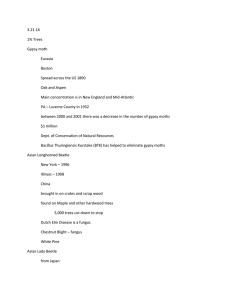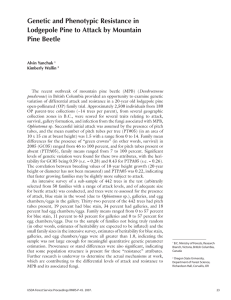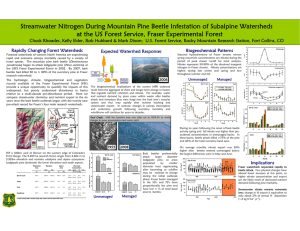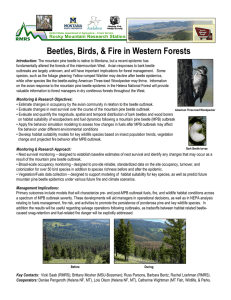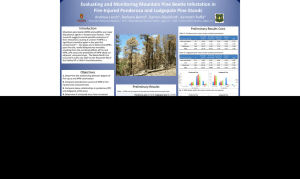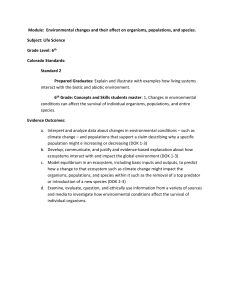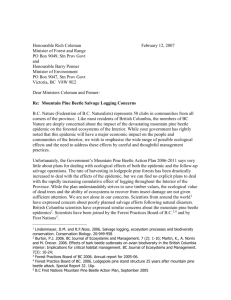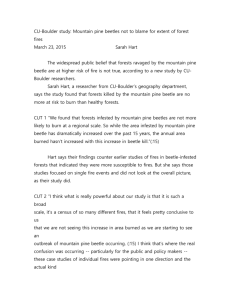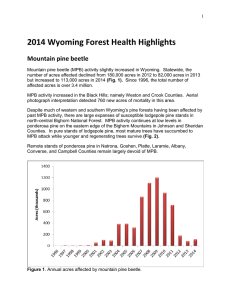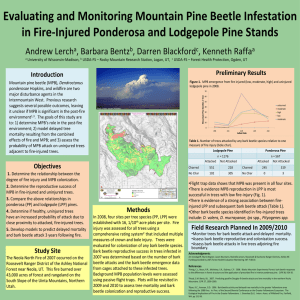Science
advertisement
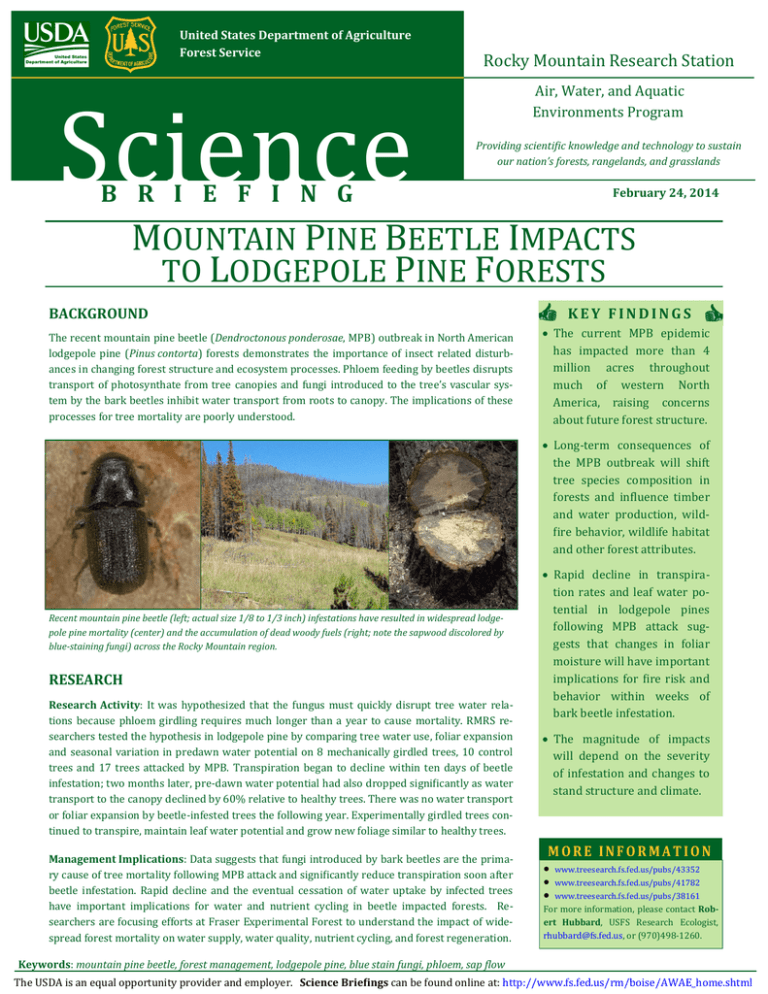
United States Department of Agriculture Forest Service Science Rocky Mountain Research Station Air, Water, and Aquatic Environments Program Providing scientific knowledge and technology to sustain our nation’s forests, rangelands, and grasslands B R I E F I N G February 24, 2014 MOUNTAIN PINE BEETLE IMPACTS TO LODGEPOLE PINE FORESTS BACKGROUND The recent mountain pine beetle (Dendroctonous ponderosae, MPB) outbreak in North American lodgepole pine (Pinus contorta) forests demonstrates the importance of insect related disturbances in changing forest structure and ecosystem processes. Phloem feeding by beetles disrupts transport of photosynthate from tree canopies and fungi introduced to the tree’s vascular system by the bark beetles inhibit water transport from roots to canopy. The implications of these processes for tree mortality are poorly understood. KEY FINDINGS The current MPB epidemic has impacted more than 4 million acres throughout much of western North America, raising concerns about future forest structure. Long-term consequences of the MPB outbreak will shift tree species composition in forests and influence timber and water production, wildfire behavior, wildlife habitat and other forest attributes. Recent mountain pine beetle (left; actual size 1/8 to 1/3 inch) infestations have resulted in widespread lodgepole pine mortality (center) and the accumulation of dead woody fuels (right; note the sapwood discolored by blue-staining fungi) across the Rocky Mountain region. RESEARCH Research Activity: It was hypothesized that the fungus must quickly disrupt tree water relations because phloem girdling requires much longer than a year to cause mortality. RMRS researchers tested the hypothesis in lodgepole pine by comparing tree water use, foliar expansion and seasonal variation in predawn water potential on 8 mechanically girdled trees, 10 control trees and 17 trees attacked by MPB. Transpiration began to decline within ten days of beetle infestation; two months later, pre-dawn water potential had also dropped significantly as water transport to the canopy declined by 60% relative to healthy trees. There was no water transport or foliar expansion by beetle-infested trees the following year. Experimentally girdled trees continued to transpire, maintain leaf water potential and grow new foliage similar to healthy trees. Management Implications: Data suggests that fungi introduced by bark beetles are the primary cause of tree mortality following MPB attack and significantly reduce transpiration soon after beetle infestation. Rapid decline and the eventual cessation of water uptake by infected trees have important implications for water and nutrient cycling in beetle impacted forests. Researchers are focusing efforts at Fraser Experimental Forest to understand the impact of widespread forest mortality on water supply, water quality, nutrient cycling, and forest regeneration. Rapid decline in transpiration rates and leaf water potential in lodgepole pines following MPB attack suggests that changes in foliar moisture will have important implications for fire risk and behavior within weeks of bark beetle infestation. The magnitude of impacts will depend on the severity of infestation and changes to stand structure and climate. MORE INFORMATION www.treesearch.fs.fed.us/pubs/43352 www.treesearch.fs.fed.us/pubs/41782 www.treesearch.fs.fed.us/pubs/38161 For more information, please contact Robert Hubbard, USFS Research Ecologist, rhubbard@fs.fed.us, or (970)498-1260. Keywords: mountain pine beetle, forest management, lodgepole pine, blue stain fungi, phloem, sap flow The USDA is an equal opportunity provider and employer. Science Briefings can be found online at: http://www.fs.fed.us/rm/boise/AWAE_home.shtml
